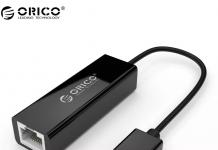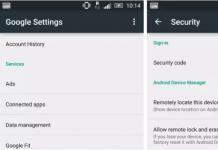There are many varieties and modifications of even the simplest and most affordable electronic equipment, such as, for example.
Not many paid attention, but even they have two common modifications - 3.0 and 2.0.
In this article, we'll take a look at USB 2.0 and USB 3.0 and discuss their differences and speed.
Features of the concept
There are well-known rectangular posts for connecting the USB format. They need to connect the appropriate cables, memory cards, etc.
Physically, all these ports are the same (in size and appearance), they can connect any device of the appropriate format.
However, the ports differ in configuration, and there are two types of USB 2.0 and USB 3.0. As is clear from the designation, version 3.0 is newer and more modern than 2.0. It has the best performance in many respects. However, these formats are conditionally compatible, that is, the selection of appropriate devices will not be a particular problem.
However, these configurations have quite different performance characteristics, and it is about them that will be discussed in this material.
History
To fully understand the differences between these two versions, you need to understand what USB is, how such a port works, and how it is fundamentally different from other types.
USB is an abbreviation for the English phrase "universal serial bus" (universal serial bus).
The main positive difference between this format and all the others is that it can be used to transfer absolutely any data and types of information, any device can be connected to this port.
It is these features that make this type of slot so popular and widespread for many years. During this time, many of its varieties and configurations have appeared, the main difference between which is.
Old PCs were not distinguished by high versatility of connections - they had a wide variety of ports for one purpose or another, this or that equipment. But since 1994, development has been carried out on a multifunctional universal port, which USB eventually became. The first version of the device, similar to the modern one, appeared in 1996 and was designated 1.0.
Its speed was minimal and barely reached 1.5 Mbps. And in 2000, the next version appeared - 2.0, and it had a more usable speed of 480 Mbps.
This speed already made it possible to really use the port to the fullest, since it finally became possible to connect simple equipment to the port, like.
Version 3.0, which is the newest and most modern at the moment, was released in 2008. It theoretically allows you to develop a very high speed, up to 5 Gb / s. This speed allows you to connect to the port not only simple equipment and memory cards, but also more or less complex and productive devices, for example,.

The development of a new version of the port was actively sponsored by many world brands, leading manufacturers in the computer and microelectronics field.
They were interested in introducing a standardized universal connector that would allow even complex devices to work, as such an approach would greatly simplify production and help cover a larger market.
Main differences
What is the difference between the varieties of these ports from each other?
There are several main differences:
- Visually distinguishing all three versions from each other is very simple - version 1.0 is not available on all computers released after 2009, version 2.0 ports are uncolored (white), and version 3.0 ports are blue, so you can identify them even before purchasing the device without looking at the technical documentation;
- Transmission speed- the main functional difference between these devices. It becomes obvious when using them, and it is this that is the reason that the same device in different ports can work at different speeds. While version 3.0's transfer rate is actually much lower than the advertised maximum 5 Gb/s, it's still much faster than version 2;
- There is also an operational difference and it lies in the strength of the current. If in the old version it was 500 mA, then in the new one it is already almost 900 mA. Thanks to this feature, this port can power several powerful devices when using a splitter;
- From the point of view of the direct device of the cable, there are also some differences. If the old version had only 4 wires under the braid, then the new one has 8 of them, which speeds up the work. But it is also for this reason that the cable of the new version is thicker. There are also negative sides to this, since such a cable arrangement limited its maximum possible length to 5 meters and significantly increased its cost;
- No old version of the Windows operating system, including XP, will work with the new version of the port, as it is not technically adapted for this. All cables and ports of version 3.0 will still work in version 2.0 when connected to a device with such an old operating system.
Thus, although this version has a number of undeniable advantages, as a newer one, it also has serious drawbacks.
The limited length of the cable can be very inconvenient for many users, especially when organizing workplaces.

Compatibility
Are versions 2.0 and 3.0 compatible, is it possible to connect a cable of one version to a port of another?
Technically, this is possible - the device will work properly, since the ports are physically compatible. However, there will always be significant changes in functioning.
Namely, with such a combination, USB will always work according to the parameters of an older version, that is, in this case, in 2.0 format.
The fact is that while the new version is adapted for a temporary "rollback" to the old one, the old one simply does not have the technical and design capabilities to work in the 3.0 format, as is clear from what was written above.
Thus, these versions can be called conditionally compatible.

<Рис. 5 Кабель>
In fact, the main disadvantage of the devices of the new version is the price, because they are a bit more expensive.
In addition, due to the shorter cable length, it may be necessary to use adapters and adapters, which further increases the cost.
On the other hand, such expenses will not be weekly - most often they are made once every few years, but they guarantee stable and fast operation of devices throughout the entire period of operation.
In this article, I want to talk more about USB specifications. Various characteristics of interfaces and differences between USB 3.0 and 2.0 will be affected. Version 1.0 I do not take into account, because it is almost never used. I talked about how to determine which port is on a laptop and computer, I advise you to read it.
Let's start from the very beginning and find out how USB stands for. This Universal Serial Bus translated as Universal Serial Bus. It was created back in 1996 and was supported by companies such as Intel, Microsoft and others. At the moment, the technology is really universal and supports most modern devices. You can connect a computer mouse, hard drive, scanner and printer, smartphone, flash drives and much more to USB.
The new USB 3.0 standard
In fact, it is not so new, because it was created in 2007 by Intel and has the name super speed, as the speed was very high compared to previous specifications. So what is the difference between USB 3.0 and 2.0? The only significant difference is speed. Theoretically, USB 2.0 is known to transfer speeds of 480 Mb/s, but in reality it rarely reaches 200 Mb/s. But USB 3.0 has far surpassed its predecessor - speeds can reach 5 Gb / s. Although it all depends on the equipment you are working with.
There is one more point worth paying attention to. In the new standard increased current up to 900 mA, in USB 2.0 the current is 500 mA. I think this is a big plus, because you can charge multiple devices much faster with a USB hub.
There are also disadvantages of USB 3.0. for example, the technology has been supported in Windows since Vista, but not in Windows XP. The price also plays an important role and is still quite high. Most devices are still focused on USB 2.0 because there is no need to migrate to the new technology. Let's say the same mouse and keyboard work quietly on USB 2.0, and changing the standard will give almost nothing.
Another good plus of USB 3.0 is compatibility with previous standards. You can connect a USB 2.0 device to 3.0 and vice versa.
What's in the USB 3.1 standard?
The more advanced USB 3.1 standard, released on July 31, 2013, had little effect on performance. Was named USB3.1 Gen1, but has 10 times more efficient operation speed. There are no differences in appearance.So, the data transfer rate remained at the level of 5 Gb / s. Of course, it depends on the controller itself and the configuration of the NAND flash memory.
Later, the developers decided to introduce a new type - USB3.1 Gen2. There are already some changes, namely an increase in speed up to 10 Gbps. There is compatibility with previous standards.
What is Wireless USB?

A technology that has been available since 2005 that allows you to transfer information using a wireless connection at a speed of 480 Mbps, provided that the connected devices are at a distance of up to 3 meters. The greater the distance, the lower the transmission speed.
Every day, progress in the field of information technology only accelerates its pace. The volumes and speed indicators of transmitted data are growing. However, to meet the needs of modern software, one should not forget about the improvement and development of the hardware component.
For transferring data between devices, the connector is widely used. USB which appeared in 1996. However, not everyone has an idea that today many modern devices are equipped with the third generation of this connector - USB 3.0. In this article, we will try to figure out what changes and improvements developers have "invested" in generation 3.0 and what are the differences between USB 2.0 and USB 3.0.
backward compatibility
In theory, devices equipped with 3.0 ports are backwards compatible with devices that have previous generation USB connectors. The only limitation will be speed indicator. While 2.0 will run at the limit of its speed capabilities, its "big brother" will not use even half of its resources.

Increase in performance
In the now outdated but still widely used USB 2.0 standard, the data transfer rate was within 460-490 Mbps. With the new 3.0 standard, this figure can reach 8 times the value - up to 5 GB per second. What do these numbers mean for the average user? And here's what: now to transfer large files, such as movies, archives, and so on, you will need to spend 10 times less time. However, not all so simple. These indicators characterize only the 3.0 connector standard, and in order to transfer, for example, files to flash memory at high speeds, they must also be supported by the controller chip, the “flash drive” itself.
Technical features
As it was written above, connectors 2.0 and 3.0 are compatible with each other. But still there are a number of differences both in design features and in technical characteristics. Both connectors still have four pins for backwards compatibility, however, the cord used in conjunction with the 3rd generation of the connector has two additional pins to organize operation at high speeds, increase the current used to power various devices, as well as to implement other benefits. As a result, the cord has become slightly thicker, and its recommended length has been reduced from five to three meters. In addition, the cord has become a little stiffer due to the introduction of a special shielding coating into the cable to protect against electromagnetic fields induced in it.

It is also worth noting that now the current strength present in the connector has increased to 950 mA while in connector 2.0 this figure was 500 mA. As a result, it became possible to use a larger charge current to charge smartphones and other devices, which significantly reduces the time required to fully charge this class of devices. In addition, the number of devices simultaneously receiving a charge from one socket can now be increased.

External differences
At first glance, distinguishing between USB 2.0 and 3.0 connectors is actually very easy. It's all about the color of the plastic insert on which the four pins of the connector are fixed. In the 3.0 standard, this plastic insert is blue, sometimes even red, while in the 2.0 it is black or gray. These two standards do not have other external differences.

Price
The average cost for flash memory equipped with a USB 2.0 connector is approximately $10 for 8 GB, And $5 for 4 GB. This price is, in principle, not very expensive and suits most of the buyers. However, it is worth paying for the increase in speed, and not very little.
The price of a flash drive with a 3.0 connector is an order of magnitude more expensive than a 2.0 one. The average cost is $40 and more. This is where the question should arise, are you ready to “lay out” such an amount from your pocket for an increase in speed. If the purpose of the purchase is a cheap tool for transferring small files, then the choice should still be made in favor of 2.0, but if speed is a fundamental factor in using a flash drive, then you can’t do without the capabilities of 3.0

How to choose
Of course, the characteristics of the 3.0 connector allow you to get significant increase in speed, but before choosing it for purchase, you must carefully read the technical description attached to the device. In some cases, it happens that the device is equipped with a 3.0 connector, but the central processor (controller chip) is not at all designed to work at such high speeds. So it seems that the connector is blue, but a significant increase in speed is not observed.
In addition, a 3.0 connector can achieve the highest data transfer rate when using the same generation of USB connector on the other end of the wire. If, on the one hand, a device with a 3.0 connector works, and on the other, a 2.0 one, then the speed will be limited by the capabilities of the second generation connector.
If you plan to connect, for example, devices such as a computer keyboard or mouse to the 3.0 connector, then you will not feel any difference from 2.0.
Output
The new third generation offers a lot of new technical features, but today you have to pay for them and pay not so little. Of course, over time and as it spreads, the cost of a new generation of connectors will decrease and all devices will be equipped with only this type of connectors.
Before purchasing devices equipped with 3.0 connectors, you need to weigh the pros and cons. Do you need an increase in speed or will the possibilities provided by the USB 2.0 connector be enough.
To the question of how USB 2.0 differs from USB 3.0, we will immediately answer - speed. Moreover, the maximum. But still, I think it will be more interesting for you to learn about all the intricacies of a fairly new standard for data exchange between drives.
What is the difference between USB 2.0 and USB 3.0, besides speed?
USB is a very useful tool. Chances are, even if you don't know what it is exactly or how it works, you've probably heard about it; and even if you didn't, you still probably used it without realizing it.
The main purpose of USB, which stands for Universal Serial Bus (USB), is communication. Basically, it is used to transfer information, data and connect between devices. In the 90s, when computer technology really began to take part in its development and began to grow, the number of devices that were launched and used needed a new format for fast and stable data transfer between gadgets.
Compatibility and better versatility
These devices used different, differential forms of wires and ports to connect to a computer. USB became universal way to connect and connect devices to the computer. Even now imagine different devices connected to your computer. This list primarily includes a mouse and keyboard, but can also include a camera, a printer, an eternal hard drive, etc. If they are connected, then they use USB. USB is also used to charge your phone and copy and transfer data from your phone, external hard drive, etc.
USB is one of the most commonly used communication protocols today. It was originally released in January 1996 and was developed by a consortium of Compaq, DEC, IBM, Intel, Microsoft, NEC and Nortel. The idea was to develop a universal communication protocol to replace the various connectors used by different companies; and they succeeded. USB 2.0, an improved version with faster speed was released in April 2000, followed by USB 3.0 in November 2008.
What is the speed of USB 3.0 and 2.0
Besides that USB 2.0 is an older version of 3.0, the main difference between them is the speed. USB provides a maximum speed of 480Mbps, while USB 3.0 provides data transfer rates up to 4.8Gbps. This difference is almost 11 times. However, in reality, the speed of each will differ depending on the types of devices used. USB 2.0 and 3.0 are also backward compatible, which means you can plug a USB 2.0 wire into a USB 3.0 port, or vice versa. However, this will also affect the data transfer rate.
Increase in speed data transfer is due to the fact that USB 3.0 has more wires; this allows it to carry more data, hence effectively reducing the time it takes to transfer all the data. USB 2.0 has 4 internal wires in its cable, while USB 3.0 has 9, which is more than double.
Two versions USB also differ in the way data is transferred. USB 2.0 uses a half-duplex method for data transfer. This means that data flow on USB 2.0 is unidirectional, meaning you can either send data or receive data; they cannot do both. On the other hand, the data stream on USB 3.0 is bi-directional as it uses the full duplex method to transfer data. This allows the user to send and receive data at the same time.
By the way, earlier we talked about . You can go to the link above.
How to distinguish a wire from USB 3.0 from 2.0?
 Here the USBs are painted white
Here the USBs are painted white Continuing to develop the topic of how USB 2.0 differs from USB 3.0, we will hook on Another difference between USB 2.0 and 3.0, namely, it is visual. The USB 2.0 port is mostly black or grey, the USB 3.0 port is blue. This is basically done so that people can tell the difference at first glance by looking at a port that looks the same. Also, the USB 2.0 and 3.0 port itself is different. The USB 2.0 port has 4 copper pins and the USB 3.0 port has 9 copper pins to match its 9 wires. The pins are arranged in two different rows, one with 4 and the other with 5.
 USB Type C example
USB Type C example It should also be noted that both USB 2.0 and 3.0 have different ports: Type A ports, which are primarily intended for use on computers and large devices; Type B ports, which are mini and therefore for use in smaller devices such as digital cameras, MP3 players, old smartphones, etc. However, most mini-B ports have now been replaced by micro-USB ports. This is the one we see on most smartphones.
In 2014, USB 3.1 was released as an upgrade to USB 3.0. It works the same as USB 3.0 but improves speed. However, it is not as widely used.
However, the latest craze is USB Type C, which seems to eventually become more popular than USB 3.0. Type C has a changeable port, which means both ends are the same. However, it remains to be seen if it will reach the popularity and widespread use of USB 2.0.
conclusions
We hope you understand What is the difference between USB 2.0 and USB 3.0 and what innovations the update of this format has brought to users.
If you find an error, please highlight a piece of text and click Ctrl+Enter.



































